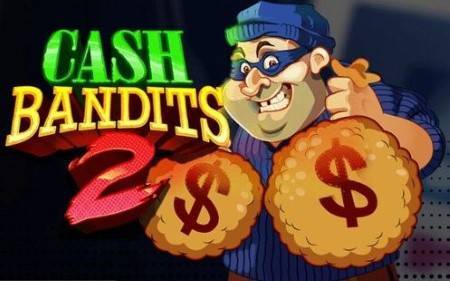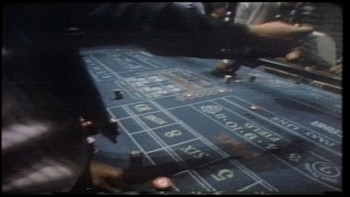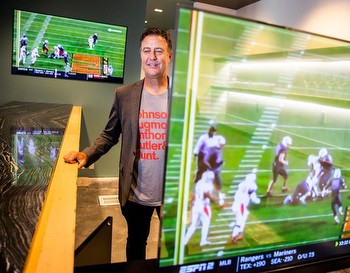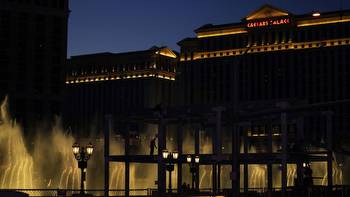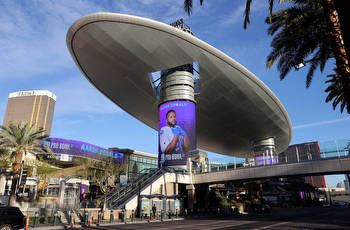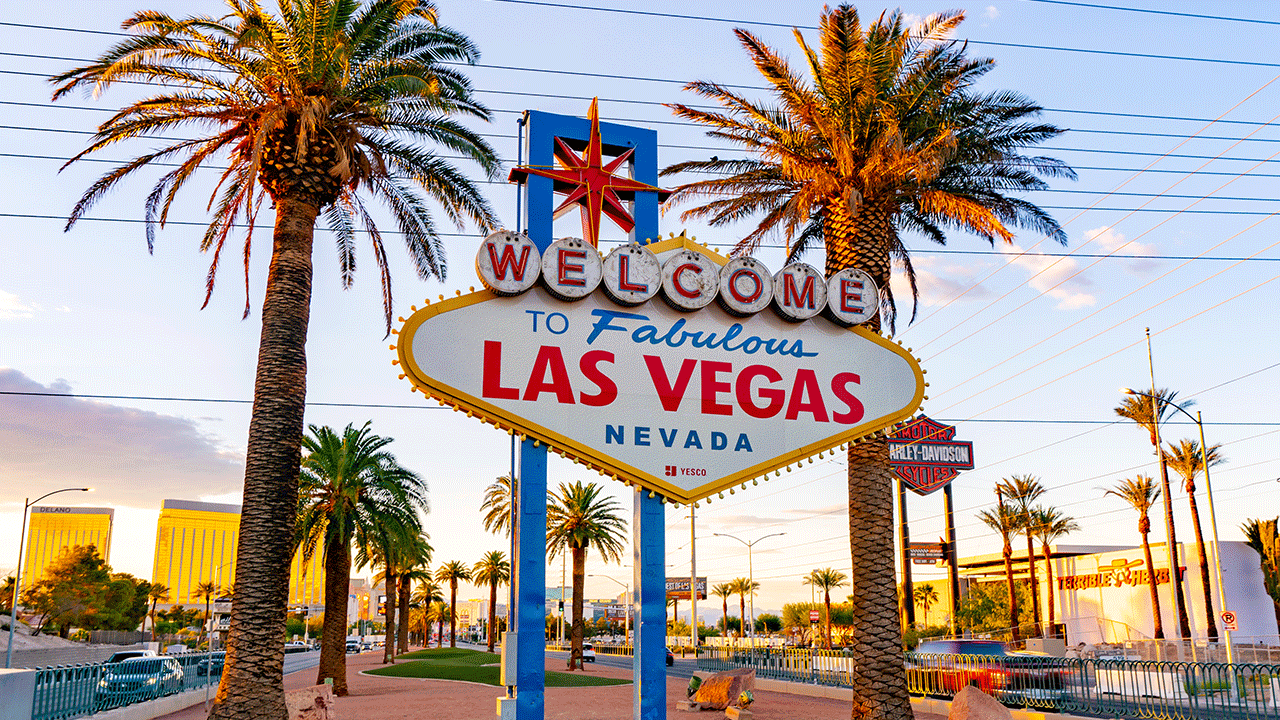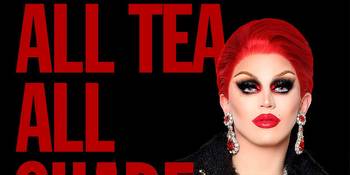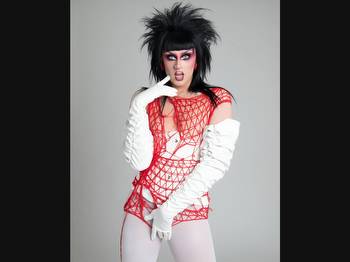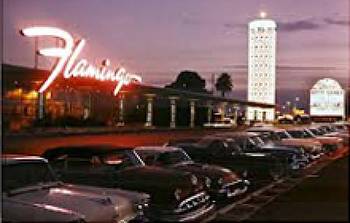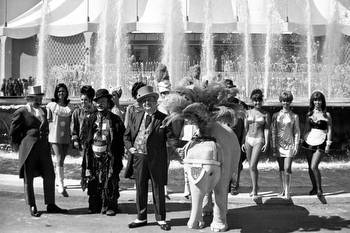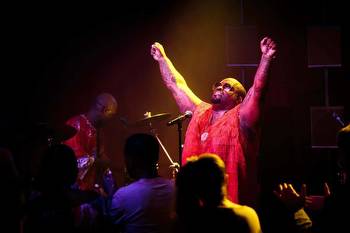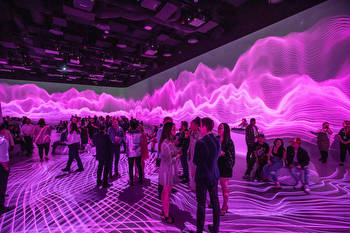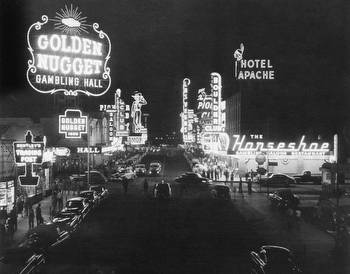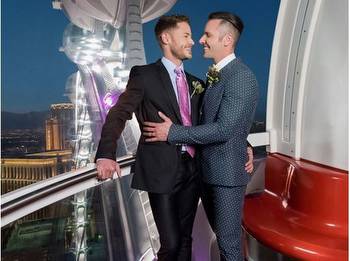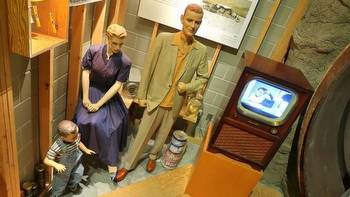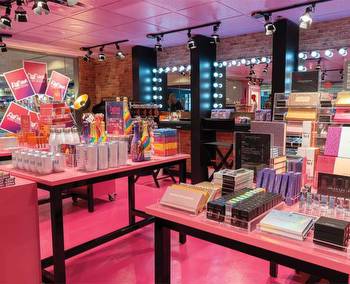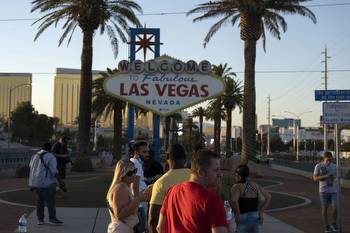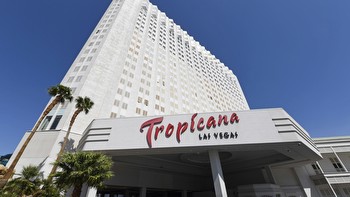From drag shows and cannabis back to gambling and divorce, Las Vegas remains the place to indulge in ‘banned’ experiences
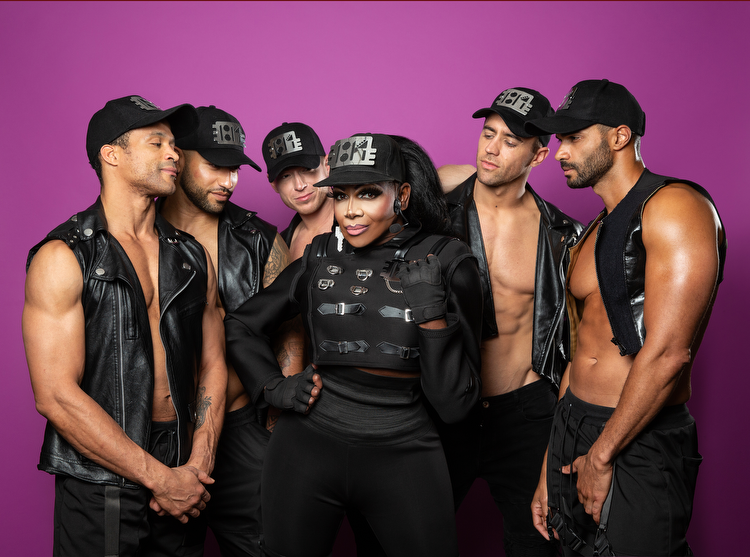
When Coco Montrese takes the stage at the Flamingo Showroom just steps away from the Las Vegas Strip, it’s typically in front of a sold-out crowd of dedicated fans who adore the many queens of TV’s RuPaul’s Drag Race and have traveled here to see this fabulous live version of the show. After the performance, during the meet-and-greet, she gets to connect with those fans, which can often become an emotional experience for all involved.
“Especially after the pandemic, the main thing we were hearing was how this [TV] show got them through one of the toughest times in their lives, with the shutdown and not being able to see people, having something keep you from your family and losing family,” Montrese says. “Drag Race became therapeutic for people. And then Vegas brought them something where you can actually go see those people right before your eyes that you really enjoyed on TV.
“I didn’t think about it that way until it was every night, in the meet-and-greet, hearing someone say, ‘You got me through this,’ or, ‘I was battling cancer and going through chemo and the only thing that kept me happy was watching you guys on TV.’ It’s a full-circle moment when they see us here in Las Vegas.”
RuPaul’s Drag Race is a global phenomenon now in its 16th season, and the wildly successful Las Vegas show opened in January 2020. Both have expanded the popularity of this storied art form, but that didn’t stop conservative officials in states such as Florida, Alabama, Tennessee and Montana from passing anti-drag legislation last year.
In September, a federal judge struck down a Texas law signed by Republican Gov. Greg Abbott the previous June, deeming it unconstitutional and an infringement on freedom of expression. (It did not specifically cite drag, but expanded an existing law to prevent children from exposure to sexually explicit performances.) Similar judgments trickled out late last year in several states after civil rights groups brought legal action against an obviously anti-LGBTQ effort.
“When people don’t understand something, they fear it,” says Montrese, who was on the fifth season of Drag Race and has been part of the Vegas show’s rotating cast from the start. “On the political side, they love to invoke fear to get people involved, to let people think there’s something different that’s threatening their livelihood or morals or standards.
“Some of this stuff they are pushing and saying, they don’t even believe, but they know if you use something people are not educated on and use certain talking points, people respond. That’s what’s fueling all of this.”
Montrese points out that drag performances are not always inherently sexual, and while RuPaul’s Drag Race Live uses a bit of classic innuendo and a lot of comedy, it’s not among the more explicit shows on the Strip. The only age restriction is that guests must be 21 to consume alcohol.
Drag has long been a significant piece of the Vegas entertainment landscape. Frank Marino has been performing as Joan Rivers for decades in showrooms across the Vegas Valley, including legendary headlining stints in An Evening at La Cage at the Riviera and in his own Divas Las Vegas production at different Strip venues. No one has done it here longer.
“When I first got here, Kenny Kerr had opened the door for people to even have a show. He opened it and I kicked it down,” says Marino, who currently produces and performs in a drag brunch show at Virgin Hotels Las Vegas. “Here, the drag show is in the same establishment any other show would be in. You didn’t have to go to seedy nightclubs or backdoor venues like you would in other cities.”
The fact that drag has always been somewhat elevated in Las Vegas is the foundation for a theory that before a huge TV show like Drag Race and a celebrity presence like RuPaul, Vegas entertainers like Marino, Kerr and others played a significant role in exposing audiences across the country to drag shows.
“If you can imagine doing three shows a night for 25 years, the amount of people that would see our show and then go home and tell their friends about it … I definitely think we were part of the movement,” Marino says. “If you think about how far back it goes, to Kabuki [Japanese theatre], to Shakespeare when women couldn’t get onstage, to Milton Berle and Flip Wilson on TV, it’s always been this comical art form that just really catapulted with RuPaul’s Drag Race.”
If drag bans had been or still prove to be successful, it’s safe to say Las Vegas would be viewed as a drag destination, a place to indulge in something deemed forbidden, unacceptable, or even outright illegal—because Las Vegas has always been that place.
“Where else in the world can you have a drive-thru wedding?” laughs Montrese. “From the beginning, Vegas has always been that place to experience the taboo. Everyone knows you can go to Sin City and do what you want to do, and never talk about it again if you don’t want to.”
UNLV history professor and department chair Michael Green likes to joke that Las Vegas began to build that reputation in the ’30s—the 1930s, when it was nothing more than a pit stop on the Old Spanish Trail, one that horse thieves liked to visit. The actual origins of the townsite are linked with railroad development and the quick designation of Block 16, “a place to be able to have alcohol,” Green says. “If you had a hotel room you could sell alcohol, so my other joke is that even hardware stores had hotel rooms. But Block 16 developed prostitution; and gambling became illegal in Nevada but some went on there; and during prohibition, Las Vegas was about as dry as the Pacific Ocean.”
Gambling was legalized in Nevada in 1931 at the same time the divorce residency requirements were changed from six months to six weeks. Although Northern Nevada’s main hub Reno may have had “a greater sense of itself as a city” back then, Green says, Las Vegas also became known as a place to get divorced quickly and conveniently, and many men and many more women would live in “divorce ranches” and spend their days swimming, fishing and horseback riding while waiting for the paperwork to go through.
“And then as the Strip and Glitter Gulch developed, you have what [journalist] Marc Cooper said in a documentary that we always go back to: Las Vegas is where you went to be certified as an adult,” Green says. “You’re now of age, you can gamble and drink and do all kinds of other things. And even if you could do these things elsewhere, there was and is the perception that you could do them here without getting into trouble with the law or with your community.”
The legalization of some of these historically frowned-upon activities has stabilized the economy of Nevada. Las Vegas was built on gambling and has diversified its hospitality-based engine by taking advantage of opportunities; Green points out that when gambling on cruise ships off the coast of California was shut down in 1939, it drove business people like Sam Boyd, Wilbur Clark, Marion Hicks and Guy McAfee to Las Vegas to develop casinos.
Although recreational cannabis use is now legal in half of the United States—and federal prohibition is keeping Nevada casinos from wading into that industry—Las Vegas seems poised to become a leading destination for cannabis culture because of its refined hospitality infrastructure, especially as consumption lounges begin to expand the industry beyond dispensaries.
“Colorado was ahead of us on cannabis, and there’s a tendency to think San Francisco allows everything, but it’s not so. And it isn’t that Las Vegas allows everything,” Green says. “But when you have for 20 years an advertising campaign, and offshoots of it, saying what happens in Vegas stays in Vegas, there’s that hint. And if the slogan is still working, that suggests that’s the general attitude.”
That famous slogan has been adjusted in recent years, both to tamp down the erroneous idea that you can do anything in Las Vegas, and to make business travelers and convention planners feel more secure (and less guilty?) in their choice of destination. But no marketing efforts have been able to completely clear up the confusion about some things; plenty of tourists assume prostitution is legal on the Strip in Clark County (it isn’t), and that they can legally smoke weed in casinos or their hotel rooms (they can’t).
“To this day there are people coming here thinking there will be a mobster at the next table, or prostitutes all over the place, or whatever they think from what they do know of Las Vegas,” Green says. “That [perception] has changed to a considerable extent, but there’s still an undercurrent … and if they ever stop thinking that way, we’re in trouble, so it can’t completely go away.”
Some might argue that the Vegas of today—packed with professional sports events, chart-topping pop music stars and technology-enhanced art installations—is less provocative and uncommon, and perhaps it’s becoming more similar to cities across the country from which visitors travel.
Fifth-generation Nevadan Bo Bernhard is vice president of economic development and a professor at UNLV and served as the inaugural research director at the UNLV International Gaming Institute. His great great grandfather was a card dealer in Dust Bowl-era Texas and Oklahoma who got tired of ending up on the wrong side of the law while working and moved to Las Vegas. His own family’s story, Bernhard says, is an example of how gambling and tourism have resulted in many different people deciding to live and work in Las Vegas, and these days, “the stuff attracting people is more mainstream. The NFL is something that’s beloved, and you can find it in 32 locales across the United States.”
But it’s going to take more than a routine pendulum swing to distance Las Vegas from that old Sin City reputation. Bernhard has worked on gaming and tourism research projects around the world, and although gambling is becoming more prevalent in most places, none of them carry the spirit of Vegas.
“During that descent into Harry Reid Airport, I don’t think anybody is worrying they might get caught doing something bad,” he says. “I worked on the Singapore casino legalization stuff and they remind you when you’re landing there of things that are banned, that drug possession is a capital offense. You can look around the plane and see people’s eyes getting big. It’s the opposite of going into Vegas because you can get into serious trouble.”
If Las Vegas is going more mainstream lately, Bernhard continues, it’s happening simultaneously as the world is becoming more like Las Vegas.
“I’ve always thought it was bogus that tribal casinos [across the U.S.] would be the demise of Las Vegas. People get exposed to this experience, they might have a favorite slot machine, and they eventually want to go to the Super Bowl version of this,” he says. “They know in Las Vegas, there are rows of these. Once people find out these activities are possible, they want to seek it out in the most glorified, commercialized, magnified sense, and it’s often the case they can find that in Las Vegas.”
And those favorite activities don’t have to be something that’s banned back home or even something that falls on the naughtier side. It might be something as simple as going out and having fun after midnight, tough to do in many places across the country. Or it’s smoking a cigarette indoors. Or maybe it’s firing a machine gun just for fun, because you’ve never done it before. Tourists may not travel to Las Vegas specifically to engage in activities like these, but the cumulative opportunity multiplied by that undying reputation is too strong a force to ignore. And it’s embedded in the identity of Las Vegas. It can’t be overwritten.
Especially when those things that drive visitation—including shows, attractions, nightclubs and dayclubs, restaurants, bars and cultural experiences—continue to become more concentrated versions of themselves, while Las Vegas becomes more accessible overall. The fun economy, as Bernhard calls it, includes more options and opportunities than ever before, and familiar fare like NFL football is balanced out by something like the Erotic Heritage Museum on Sammy Davis Jr. Drive, just west of the Strip.
Now in its 16th year exploring the history of erotica and socio-cultural perspectives on sex, the nonprofit venue currently hosts an exhibit on Spanish artist and illustrator Luis Royo and another exhibit featuring the music and memorabilia of director Michael Ninn’s films Catherine and Sacred Sin, which includes a collaboration with Eddie Van Halen. The mostly academic offerings at the museum catch first-time visitors by surprise, says director and CFO Victoria Hartmann, as many guests expect different programming.
“Some people expect to see live sex shows, not understanding the laws in Clark County. We actually have an exhibit built around that, where it is legal,” she says. “Some people come in here skittish, others come out irritated because we don’t have sex shows. Others aren’t sure what to expect … but it ends up being a learning experience and many guests say they didn’t know all there is to study around sexuality.”
Sex museums are something of a dying breed, Hartmann says, with few such venues operating across the country. The museum recently sponsored a new UNLV Special Collections initiative designed to preserve the history of sexual entertainment, culture and economics in Southern Nevada and beyond. It will include collections on sex worker rights and activism, feminist entrepreneurship, adult film and media, and the history of Nevada’s legal brothel industry.
If you think Vegas is going mainstream and getting less naughty, consider that the Erotic Heritage Museum is surging—generating more revenue thanks to greater visitation with bigger events (sports and otherwise) landing in Las Vegas, and booked through 2031 for new exhibits.
“As a result of the mainstreaming of sexuality and increased visibility of all different kinds of sexual expression, the museum quite surprisingly found itself becoming more subversive in its exhibits,” Hartmann says. “The exhibit opening in August is the most subversive we’ve ever had, and that’s what people seem to be craving when they come here, something unusual.”
If Old Vegas was a safe place for a card dealer to earn a living, today’s Las Vegas is a haven for all kinds of personal expression. The attempt to restrict or ban drag performances is truly a sad tale, politicizing art and weaponizing fear, and it has created real danger.
Montrese admits there were threats while she was traveling to perform last year. “I had an FBI guy meet with me and talk about escape routes while I was onstage, if someone tried to shoot at me or anything like that,” she says. “That took some getting used to. There was protection for us and I did applaud that, but I didn’t want to invoke fear and I never want to cancel anything because I don’t want to buy into fear.
“I love what I do and if something happens to me while I’m doing it, I’m okay with that because I don’t want art to be silenced.”
Marino had a very different experience on tour, recently selling out a series of performances in Florida. The veteran entertainer says spending decades starring in Vegas shows gave him a privileged perspective on how drag is viewed.
“I was going onstage and being applauded for doing something back then that, if I was in another city, I could get beat up or put in jail for doing,” he says. “Now it’s really everywhere. I toured through Florida and sold out every show, some 2,000-seaters and probably a dozen different venues.”
There’s power in the freedom Las Vegas promises. It’s not really about having fun and getting away with it; sometimes it’s about escaping judgment.
“Most of us drag queens come from a situation at home where we’re not understood, and this was an outlet for us to be able to express ourselves and perform,” says Montrese. “It wasn’t something perverted and crazy like politicians make it out to be. Drag is all about making people happy, not taking yourself too seriously, making people laugh and letting all of us escape from our regular lives.”







